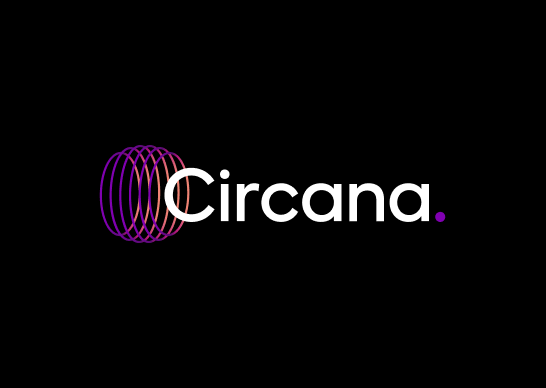- Circana
- Aug 12
- 7 min read
Updated: Nov 25
Marketers are feeling consistent and growing pressure to justify ad spend. Improving how your data is collected, organized, and analyzed can help improve both the efficacy of your budget and your ability to communicate goals and progress with other teams. With budgets getting tighter, you and your team might be asked to justify budgets on a near-on-demand basis. Here at Circana, we have seen the detrimental impact of pausing campaigns due to campaigns being scrutinized through the lens of short-term ROI goals. Identifying and solving data gaps can help you shift focus away from short-term ROI toward sustained incremental growth.
You are likely to have more data, from more sources, than ever before. And while that data offers seemingly endless opportunities for optimization, identifying and implementing the right strategies effectively can be impossible if you have gaps in your data environment. To get the most out of your campaign, you need complete, clean, and accurate data. When you have a full picture available, you can turn data into informed decisions that can be tracked incrementally, so that each individual action can be measured and improved.

What Causes Data Gaps in Campaign Measurement?
Data gaps are frequently caused by three main factors: fragmented/siloed data, relying on manual processes to organize data, and privacy-driven restrictions.
Fragmented Data from Multiple Walled Garden Sources
When you run any part of your campaign through major tech and entertainment brands like Facebook, Prime Video, or TikTok, your first-party data might be locked in a walled garden. While these platforms are essential to your strategy, your first-party data is trapped within their architecture. Instead of seeing the full picture for your campaign and being able to make decisions across channels, you are forced to look at datasets individually and in separate contexts. Instead of uniform metrics and insights, platforms have individual methodologies, activation opportunities, and can skew performance data. Moving data into a secure, clean room environment can ensure you are seeing the whole picture with less bias.
Overreliance on Manual Data Analysis
There is a consistent problem where brands invest in data collection, but not in data organization and analysis. If you're pulling your data and organizing it yourself, you will end up sacrificing accuracy, precision, or timing. Regardless of which aspect is sacrificed, it will impact your ROAS if you are unable to activate insights quickly or cannot get granular with your data. At its core, a large problem for marketers is not “missing data” but missing opportunities in your data, due to a lack of consistent organization. Brands need to invest in data architecture that can integrate data from dozens of different sources and organize that data, without sacrificing timelines or accuracy.
New Privacy Laws and Third-Party Cookie Issues
Between new privacy laws taking effect and major browsers phasing out third-party cookies, you’ll notice parts of your customer journey going dark, leaving you with new data gaps. These changes limit how and when you can collect data, and they require users to give consent before you can track their behavior. These blind spots can skew your data and your insights. To navigate these changes, your brand needs to adapt and lean into privacy-compliant tools and first-party data strategies that rebuild measurement in a cookieless world.


Why/When Is It Important to Fix Data Gaps?
When maximizing your ROAS, you need to know that you are making the right decisions at the right time. Data-backed decision-making is vital to running the most efficient and effective campaigns. Data gaps can hurt efficiency; however, not all gaps present the same risk to your campaign’s success. You need to understand where your gaps are, how to solve them, and their potential impact on the accuracy of your decisions.
Activating Fact-Based Data-Driven Optimizations
The strongest decisions for your campaign are informed by reliable data. This data also helps justify those decisions and communicate them across teams. If data gaps are preventing you from activating your insights across your campaign, these need to be addressed. Missing data that causes a lack of clarity for you and your team can undermine your ability to deliver incremental growth. Each aspect of your campaign needs to be measurable, so that growth is measured incrementally instead of broadly. Instead of focusing on traditional ROI and ROAS, complete data allows you to report on how individual campaign actions are driving success incrementally.
Looking to Measure and Grow Your Brand With Target Audiences
With granular data, brands can expand targeting strategies beyond creating audience segments through traditional lenses like demographics or geography. While there is value in traditional audience segments, there is an increasing growth opportunity in understanding audiences based on their purchase behavior. Understanding the purchase behavior of your consumers and shoppers can help you identify and activate against your most valuable segments. Often, these opportunities are missed either because of a lack of complete data or the inability to sort through this data across channels to accurately build audience segments with precision. If data gaps are making it impossible to understand your audiences at a granular level, you need to close them. Identifying and addressing your campaign's data gaps in relation to audience data enables you to improve campaign performance by ensuring that your messaging and marketing resonates with the consumers who matter most to you.


How You Can Fix Gaps in Your Customer Data
To truly understand your customers, you need a clear and connected view of the journey they take across the various channels that make up your campaign.
Get All of Your First, Second- and Third-Party Data in One Place
A connected data environment improves visibility for you and your team and integrates data in a secure and unbiased environment. To understand how your audience interacts with your brand and track their journey, you need to consolidate all your data in one space.
Work With Data Partners That Can Analyze Disparate Data
Even when your data lives in the same place, it won't deliver real value unless it speaks the same language. Different data environments can use different metrics, labels, and measure performance in different ways, adding unnecessary complexity to data analysis. Bringing in an independent data and measurement partner to demonstrate outcomes for your marketing campaign can provide an unbiased, standardized, and more holistic view of performance, enabling your team to garner insights at speed. An independent data partner can also help you unlock better audience targeting for your campaign by combining your data with their deep industry knowledge. Lastly, with harmonized campaign data from various clean rooms, you can build trust in the data you're seeing, make faster data-backed decisions, and focus on creating strategies for your campaigns that drive growth.
Use a Data Clean Room for Your Team to Improve Visibility
Cutting-edge data clean room solutions streamline connections between major cloud platforms and walled gardens, providing continuous data updates from each source. But not all clean rooms are created equal. Some clean rooms offer tools that make it easier to activate insights, while others have restrictions on how you can use the data. In some cases, brands operate across multiple clean rooms, each with distinct capabilities, which creates an added level of complexity. That's why it's beneficial to work with a data partner who can create a customized solution to help you navigate complex data sources, streamline your data strategy, and ensure your team is set up to activate valuable strategies.

How Do Data Clean Rooms Work and What Are Their Limitations?
Data clean rooms provide a secure space for analyzing your brand's consumer data from multiple sources. However, it's crucial to understand that these platforms do differ from one another and do have limitations. Depending on your clean room provider and your data sources, you may have limitations regarding activation, speed, and flexibility.
Private, Secure, Consumer Data from Multiple Sources in One Place
Clean rooms have become increasingly popular among many brands due to their secure interface and ability to bring first-party data frameworks into the environment, ensuring the insights stay aligned with your campaign goals. Clean rooms provide a private and secure space for bringing your data together with trusted partners, such as retailers, data aggregators, publishers, or platforms, without exposing confidential customer information.
Issues With Activating Audiences
One of the biggest challenges you may encounter is activating audiences directly from the clean room. Some large platforms require you to build and activate audiences within their own ecosystem, which limits how freely your brand can move insights from a clean room to the related marketing channels. For example, to activate insights and strategies for YouTube, you will inherently need to work through Google Cloud. When your team is using multiple clean rooms and platforms, the complexity only increases. That's why it's essential to collaborate with data partners that can help you draw actionable insights from data and provide strategies for cross-platform activation.


How Do You Use Data Clean Rooms Effectively?
Many businesses use multiple data clean room environments in order to manage their data. When it comes to choosing the right data room provider, you need to consider your business goals, your capabilities, and your data sources. For example, businesses that want a platform built around data science typically use platforms like Snowflake or Databricks. However, brands that are looking for managed services and templates often work with providers like LiveRamp.
The most essential element to any of your data ecosystems is the quality of your data. Ideally, you need a data source that provides data that can be easily integrated into multiple environments without sacrificing accuracy or speed. Since you will likely need to work with multiple platforms and environments, you need data that is not only complete but also compatible.

How Can Circana’s Complete Data Help Your Business?
Our data is designed to be intuitive so brands can make near-real-time decisions and in-flight optimizations for their campaigns, while also being comprehensive. When it comes to consumer and market data, there are often two stopgaps we see that cause brands to miss out on the full potential of their data.
1. Incomplete data: If the data in your ecosystem is not complete, you will likely not have the context you need to make the right decisions. You cannot afford to waste time hunting down complete market and consumer data. You need granular data that delivers fast insights. Here at Circana, we are aggregators of retailer data. Our loyalty card data is built on verified purchases from your consumers, while our receipt panel is comprised of over 200k static panelists and is calibrated alongside data from over 1,100 retail partners. With Circana’s data, you can understand your campaign measurement data with contextual cues from real shopper data.
2. Complex data: It is common to move your data into multiple ecosystems and platforms in order to activate insights effectively. To do that effectively, you need data that doesn’t constantly need to be reformatted and cleaned every time it is imported into a new environment. Our data is designed to be intuitive and compatible across platforms so that you do not have to sacrifice quick decision-making when activating insights across different marketing channels.































